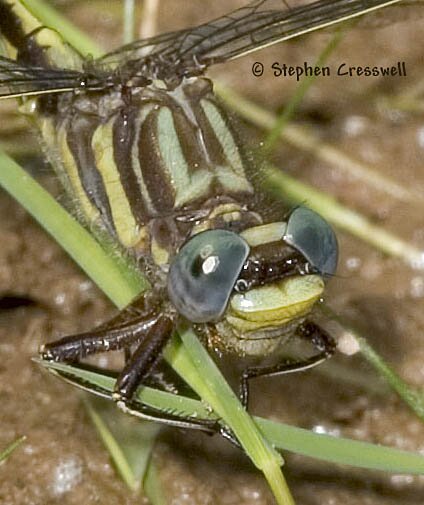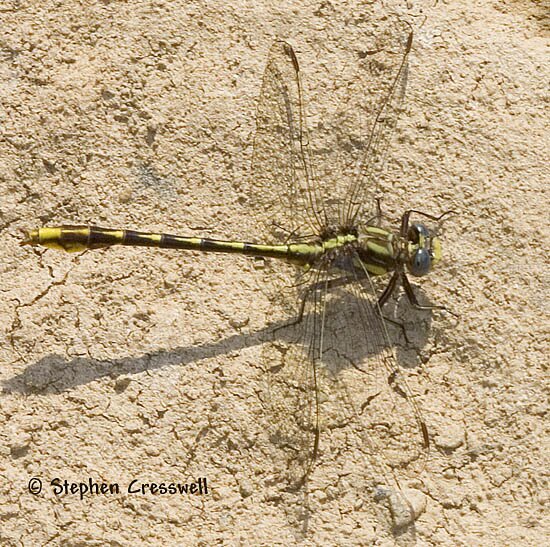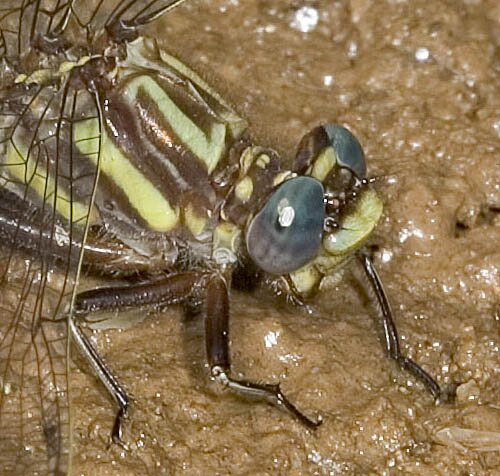

Family: Gomphidae
Length: typically 40-45 mm
The Lancet Clubtail takes its common name from the dagger-shaped yellow marks found on top of the abdomen. The Latin name exilis means slender, and refers to this clubtails club (at the rear of the abdomen), which is not very wide.
The top of each abdominal segment has a yellow marking, often quite extensive on the last two segments (S9-S10). Occasionally S9 is all dark on top, however. The sides of each segment have yellow markings too, and these markings can be especially heavy on the males flangeon segments S8-S9.
Females have a stouter abdomen with no hint of a club.
The eyes are blue-gray in the males, and gray to grayish-green in females. As in all the clubtails, the eyes are widely separated.
The legs are brown in males and greenish in females, and in both sexes the legs are more pale basally (close to the body).
Lancet Clubtails are commonly found perched on rocks or even on the ground itself.
This species is common across the Mountain State, found at ponds and lakes, at slow rivers and large sluggish creeks, and in marshy areas.

Left: A male Lancet Clubtail. Note the claspers. The club is relatively narrow, but note the side flange on segments S7-S9. The dagger-shaped yellow marks on the back of the abdomen give the species its common name.

Right: The eyes are grayish blue in the male. The legs are brown, paler near where they attach to the body.

Left: The female Lancet Clubtail has no club at all. Overall, the females abdomen is thicker than that of the males. Note that the eyes of females of this species have less blue in them compared to the eyes of the males.


